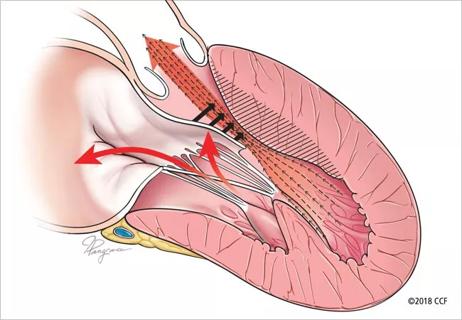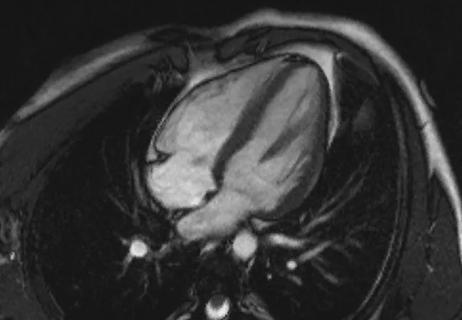Cardiac imaging substudy is the latest paper originating from the VANISH trial

Valsartan, an angiotensin receptor blocker, has been shown to attenuate disease progression in children with hypertrophic cardiomyopathy (HCM). Despite promising results, mechanistic changes at play have not been well-understood. Now, findings from a cardiac imaging study offer more insights into the drug’s benefits, specifically those involved in biventricular remodeling and myocardial intracellular volume. These findings were published in JAMA Cardiology.
Advertisement
Cleveland Clinic is a non-profit academic medical center. Advertising on our site helps support our mission. We do not endorse non-Cleveland Clinic products or services. Policy
The worldwide prevalence of HCM is approximately 0.2%. However, improved screening techniques, including genetic testing and cardiac magnetic resonance (CMR) imaging, have led to increased awareness and attention around the diagnosis.
The spectrum of disease and manifestations in pediatric HCM can be challenging from research and practice standpoints, explains pediatric cardiologist Kenneth Zahka, MD, whose clinical focus is genetic forms of cardiovascular disease, as the majority of children with HCM do not have the clinical phenotype. “It’s not uncommon for an HCM diagnosis to occur in a child with no known family history, which can then lead to a parent’s diagnosis; and the same can happen on the adult side, leading to a child’s diagnosis.”
With this in mind, Cleveland Clinic’s pediatric HCM team takes a highly specialized and coordinated approach, collaborating with adult HCM colleagues to provide continuity of care for patients across the lifespan. The high-volume center makes bidirectional screening efforts cohesive and well-organized for parents and children. However, these patient populations are managed very differently because of the clinical course. Continued investigation into therapeutic effects is critical to refine approaches and support long-term quality of life in children.
The JAMA Cardiology paper is the latest in a series of substudies from the landmark VANISH (Valsartan for Attenuating Disease Evolution in Early Sarcomeric Hypertrophic Cardiomyopathy) trial, published in Nature Medicine in 2021. In the multicenter, double-blind, placebo-controlled trial, researchers show that valsartan improved cardiac structure and function in the treatment cohort, as compared to those receiving the placebo intervention. Trial participants ages range from 8 to 45 years, and all had early-stage sarcomeric HCM with minimal symptoms.
Advertisement
Dr. Zahka, a principal investigator, recalls, “It was a bit surprising that in two years, a relatively short period of time, and in a relatively well patient population, there was a statistically significant change in the composite outcome.”
In the imaging substudy, researchers used CMR to analyze myocardial tissue and better understand valsartan’s effects on myocardial structure, function and tissue parameters in patients. In total, 137 of 178 VANISH participants received CMR baseline imaging which was then repeated at the two-year mark.
In their results, the authors report that indexed extracellular volume (iECV), indexed intracellular volume (iICV), and late gadolinium enhancement (LGE), suggestive of higher cardiac biomarker levels and worse cardiac remodeling in early-stage disease.
Over a two-year period, valsartan appeared to increase left ventricular (LV) end-diastolic volume index (mean difference [MD], 3.3 mL/m2; 95% CI, 0.4-6.2; P = .03), which was consistent with treatment benefit. However, it did not significantly impact LV mass index (MD, −2.9 g/m2; 95% CI, −6.1 to 0.2; P = .07) or LV ejection fraction.
“It was difficult to show that valsartan improved scarring in and around the myocardial tissue in two years,” says Dr. Zahka, although this could change in a longer observation period.
Interestingly, right ventricular (RV) end diastolic volume index (AMD, 4.7 mL/m2 ;95% CI ,0.6-8.8; P = .03) and RV end-systolic volume index (AMD, 2.4 mL/m2; 95% CI, 0.1-4.7; P= .04) were significantly higher in the valsartan placebo cohort after two years.
Advertisement
“In my world, as a pediatric HCM expert, showing that the heart is actually a bit bigger on valsartan is, in fact, a very important marker that could pay dividends in the long run,” asserts Dr. Zahka. “What am I looking for as the various early signs of HCM in the young, is not the same as in the adult world—it’s actually that the heart is too small.”
Not every pediatric patient with HCM is a candidate for valsartan, Dr. Zahka says. “We have enough data from the VANISH trial to say, if a patient has no indications of HCM, then medications aren’t really needed.”
What if changes are observed in the thickness of the heart? “We evaluate resting and exercise blood pressure. If it’s above average—or if any other symptoms emerge—we start those patients on valsartan and monitor them over time,” he says.
Dr. Zahka calls the drug a longer-term investment in a disease with an often benign clinical course in the young that can lead to complications with time. “In the world of pediatrics, it’s our job to help our patients lead long, healthy lives.”
Advertisement
Advertisement

End-of-treatment VALOR-HCM analyses reassure on use in women, suggest disease-modifying potential

Vigilance for symptom emergence matters, a large 20-year analysis reveals

Phase 3 ODYSSEY-HCM trial of mavacamten leaves lingering questions about potential broader use

5% of flagged ECGs in real-world study were from patients with previously undiagnosed HCM

High composite score in myectomy specimens signals worse prognosis

Few patients report left ventricular dysfunction or heart failure after one year

Avoidance of septal reduction therapy continues while LVEF dysfunction remains infrequent

New risk score pools factors that may predict adverse outcomes in the uncommon phenotype